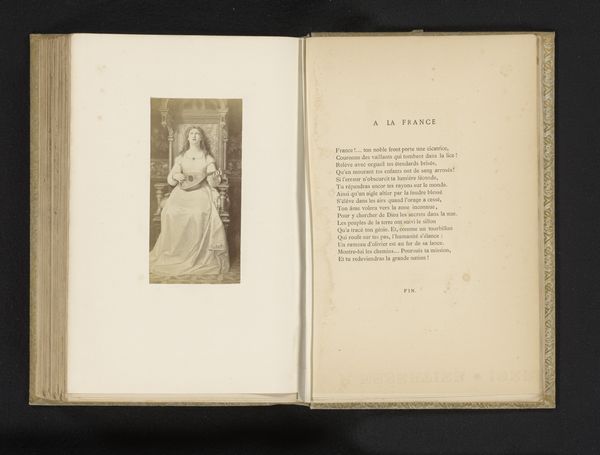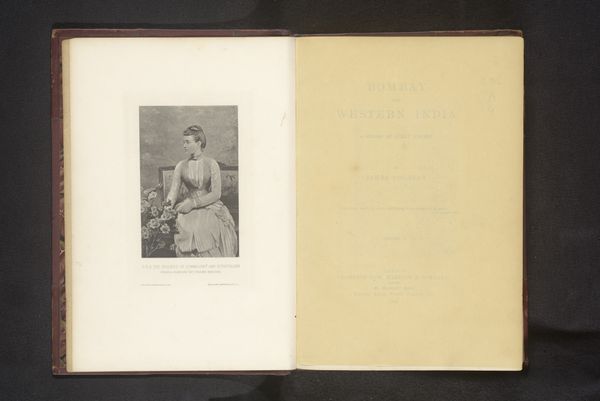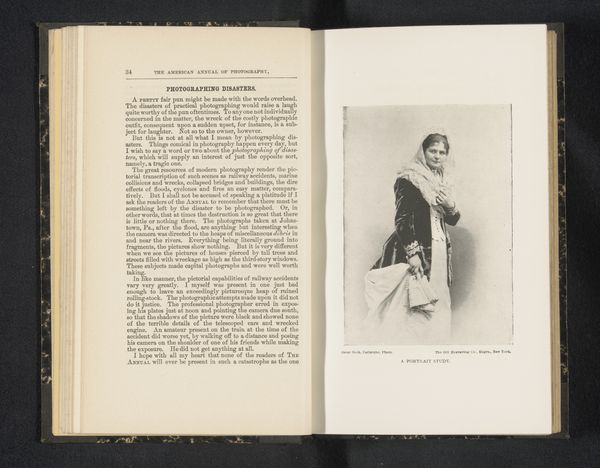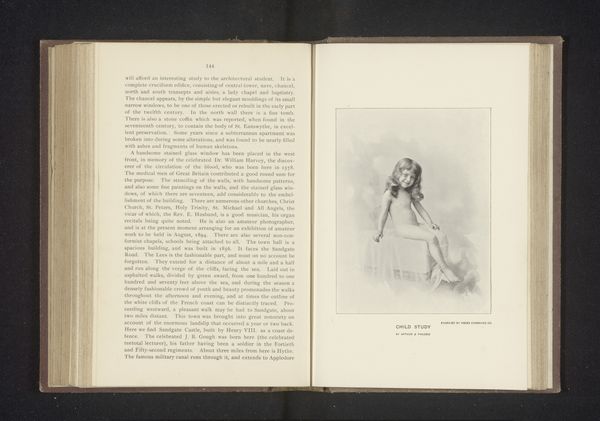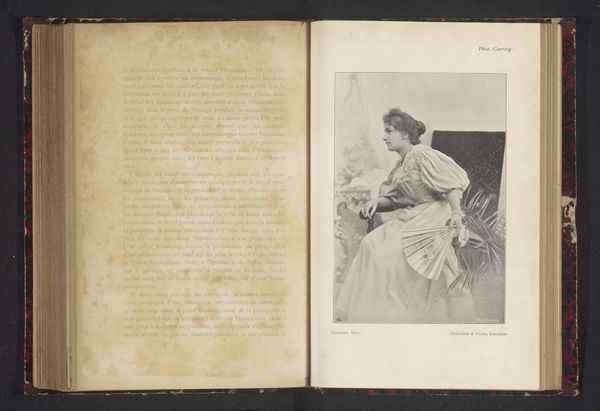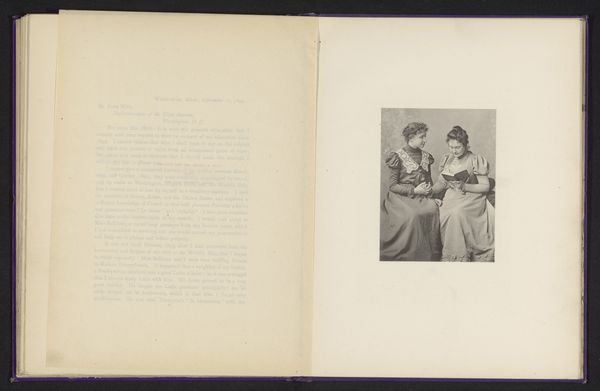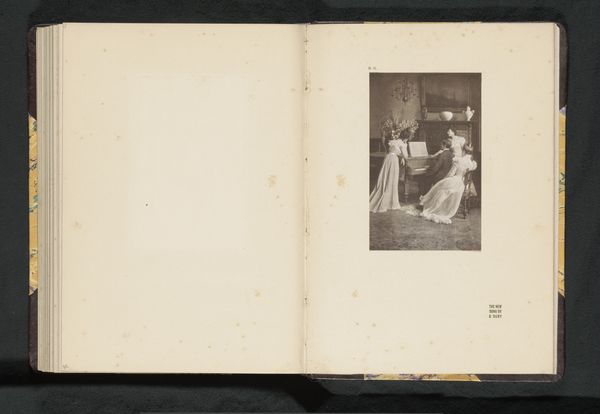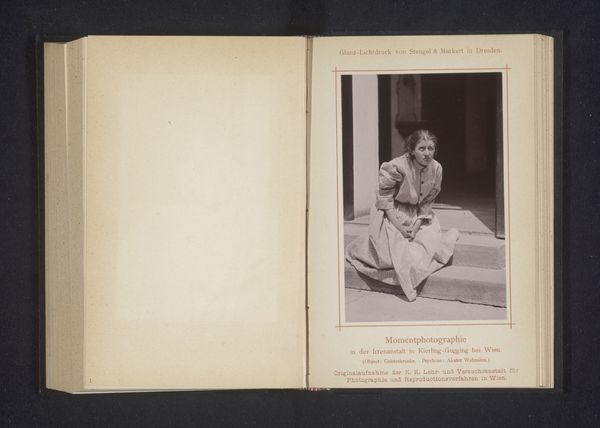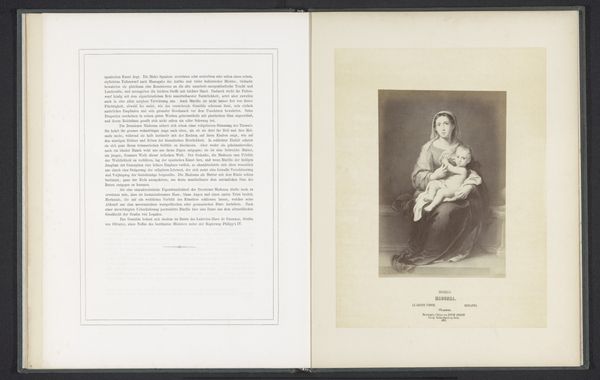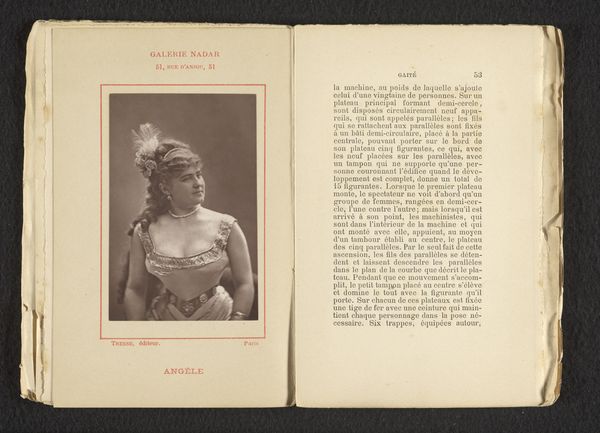
#
aged paper
#
homemade paper
#
paper non-digital material
#
paperlike
#
light coloured
#
paper texture
#
folded paper
#
thick font
#
paper medium
#
thin font
Dimensions: height 141 mm, width 95 mm
Copyright: Rijks Museum: Open Domain
Editor: Here we have "Portret van Rani Kanari Sahiba," made before 1895. The portrait, seemingly a photograph on aged paper, is set in an open book. The effect is really striking because it blends photography with what seems like a personal, hand-crafted element. What kind of historical and cultural context should we keep in mind as we look at it? Curator: Considering its placement in what seems like a published volume, let's explore how photographic portraits functioned in constructing and disseminating power and identity within colonial India. What does it mean to present this woman within the formalized structure of a book, potentially reaching a wider audience than a simple photograph might? Who controlled that presentation? Editor: It's like the book is acting as a frame, legitimizing and formalizing the image. So the very act of placing this portrait in a book... Curator: Precisely. The act of memorialization is critical. Ask yourself, how might Rani Kanari Sahiba have been attempting to control or influence her image and legacy in this historical moment? The addition of text alongside the image – what could its relationship to the photograph reveal? Editor: That makes me see it differently, as a conscious presentation intended for public consumption, almost like a carefully crafted persona. Was this kind of formal portraiture common, or would the Rani have had more agency because of her position? Curator: Portraiture was a common tool, particularly among elites, but its *presentation* in published form gives it unique social and political implications. Where might such books have been circulated? Whose narratives were considered worthy of preservation and dissemination? Editor: So it's not just the portrait itself, but the choice of platform, which reflects something about the society and how it values its members. Thinking about audience and its influence changes my perception completely. Curator: Exactly! Considering who gets represented, how, and to whom exposes so much about the power structures at play. Editor: I now see that this portrait tells us a story about more than just one individual, but the societal and cultural forces at play during the colonial era. Thanks!
Comments
No comments
Be the first to comment and join the conversation on the ultimate creative platform.
